
The Nez Perce Soil and Water Conservation District (District) identified weed control as one of its top five priorities in order to achieve riparian restoration and protect stream health. One of the priority weed species impacting riparian areas is hybrid knotweed (Polygonum cuspidatum). Hybrid knotweed control began in the Lapwai Creek watershed in 2005.
Riparian restoration and protection is critical along many streams within the District in order to protect critical steelhead trout (Oncorhynchus mykiss) habitat as well as improve water quality. The District’s knotweed treatment program focuses within the Lapwai Creek watershed along Mission, Tom Beall and mainstem Lapwai Creek as these stream segments are the most heavily impacted by knotweed infestations. Knotweed grows very aggressively in disturbed areas and excludes native plants, such as trees and shrubs, by competing for light, nutrients and moisture. The control of knotweed along stream segments within the Lapwai Creek watershed was identified in 2009 as a treatment need in order to protect and restore steelhead habitat. Habitat in stream segments with high densities of knotweed is limited by lack of instream structure, high water temperatures and low water flows in summer months. A lack of riparian vegetation contributes to these limitations. The goal is to eradicate the knotweed along the stream corridor and contain the weed within the flood zone areas. Once the knotweed is either eradicated or controlled, the area is re-vegetated with native grass, forbs, shrubs and trees.
The District completed a Hybrid Knotweed Control Plan which identifies treatment areas and maps infestation levels. Treatment focuses within the Lapwai Creek watershed as this area contains the highest concentration of knotweed within the county. Knotweed control is labor intensive as an injection control method is used for the majority of treatment areas. The reason for the stem injection method is to eliminate herbicide impacts on non-target species such as cottonwood and willow.
2018 Treatment:
During the summer of 2018 a total of 0.77 acres of knotweed were treated. In addition, 17.51 acres of knotweed were inventoried.
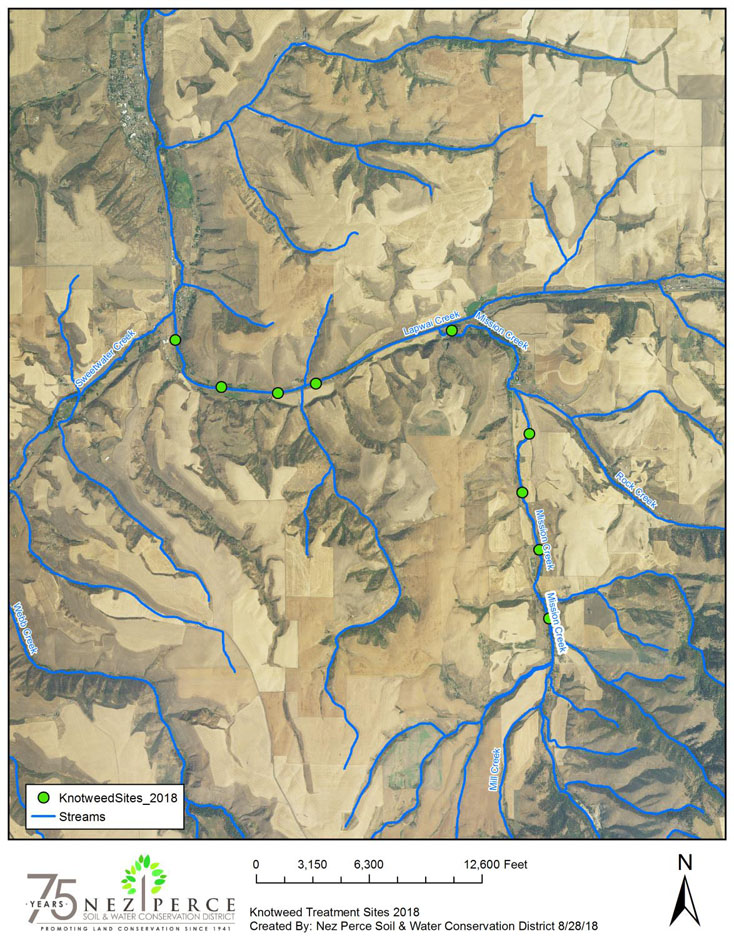
2017 Treatment:
During the summer of 2017 a total of 0.87 acres of knotweed were treated. In addition, 17.51 acres of knotweed were inventoried.
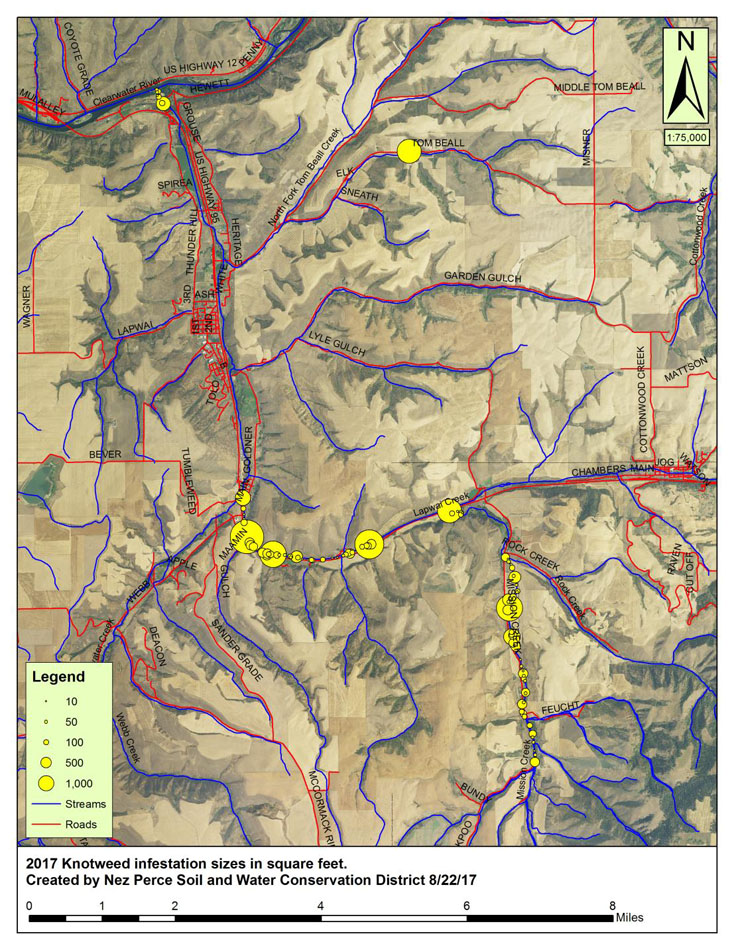
2016 Treatment:
During the summer of 2016 a total of 0.46 acres of knotweed were treated. In addition, 56.67 acres of knotweed were inventoried.
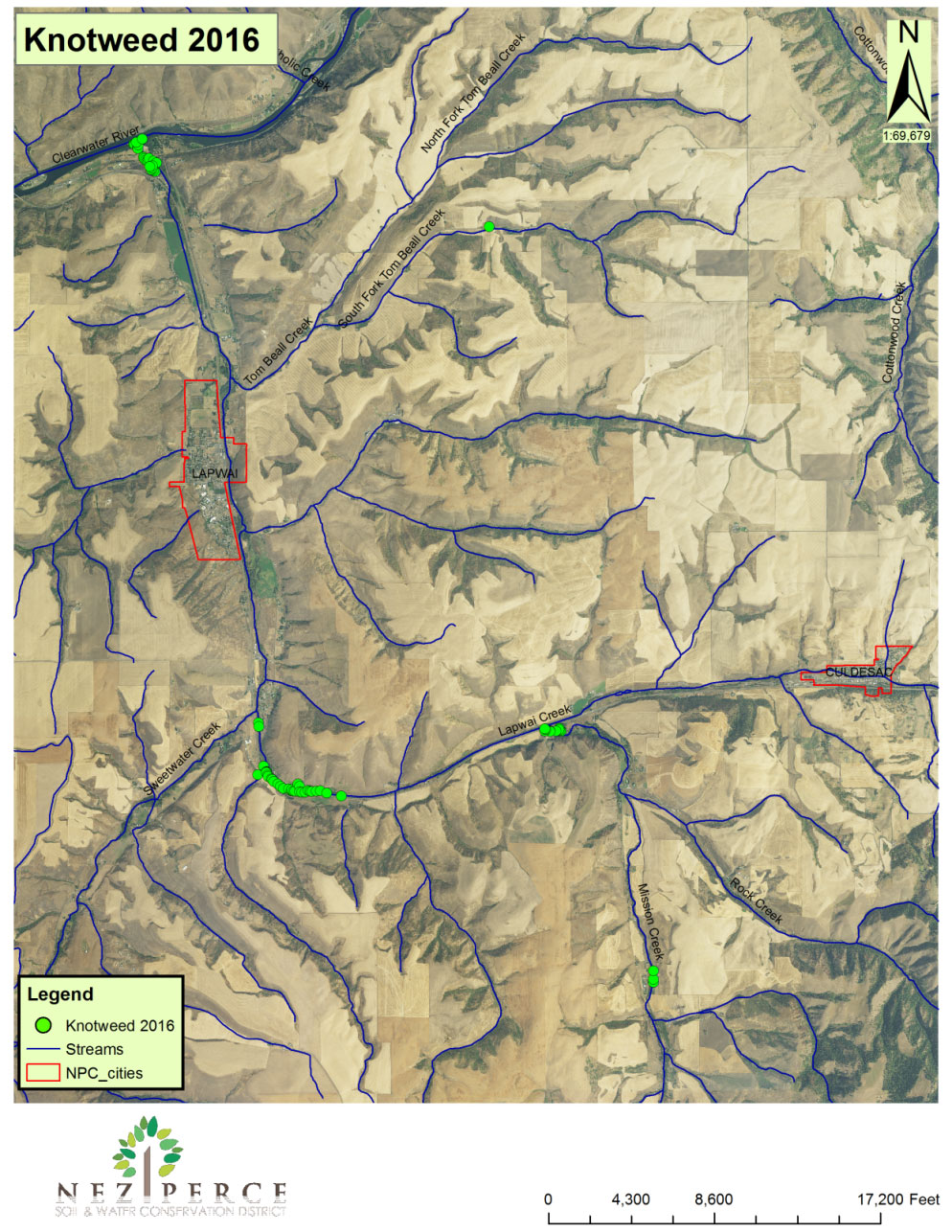
2015 Treatment:
During the summer of 2015 a total of 7.00 acres of knotweed were treated.
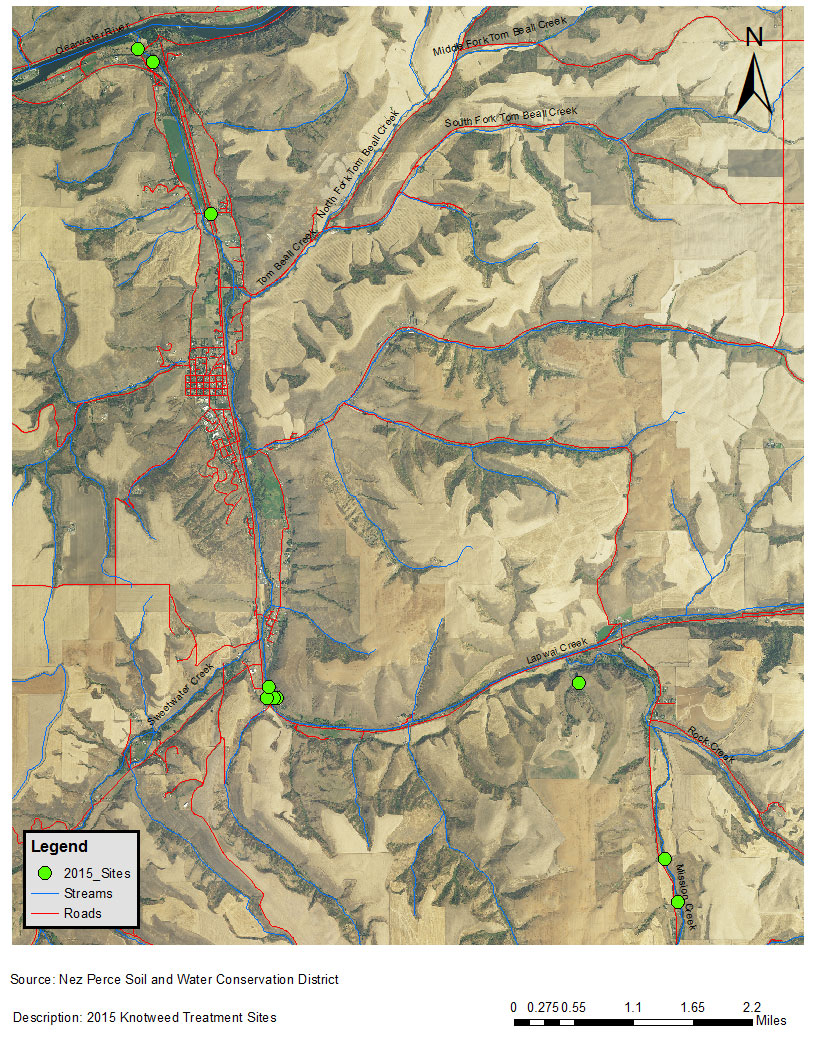
2014 Treatment:
During the summer of 2014 a total of 2.68 acres of knotweed were treated.
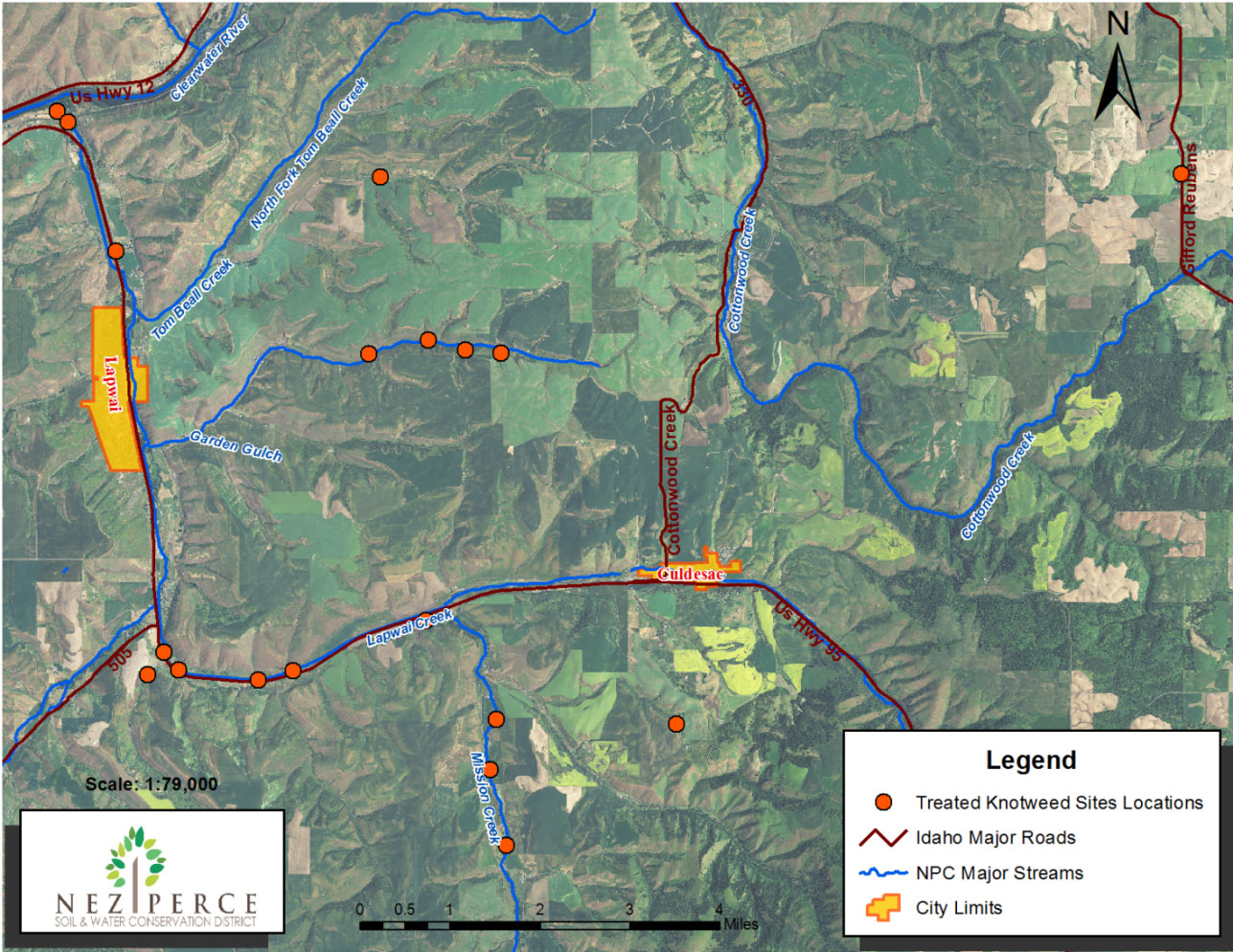
2013 Treatment:
During the summer of 2013 a total of 2.2 acres of knotweed were treated.

2012 Treatment:
During the summer of 2012 a total of 7.3 acres of knotweed were treated.
2011 Treatment:
During the summer of 2011 a total of 29.2 acres of knotweed were treated.